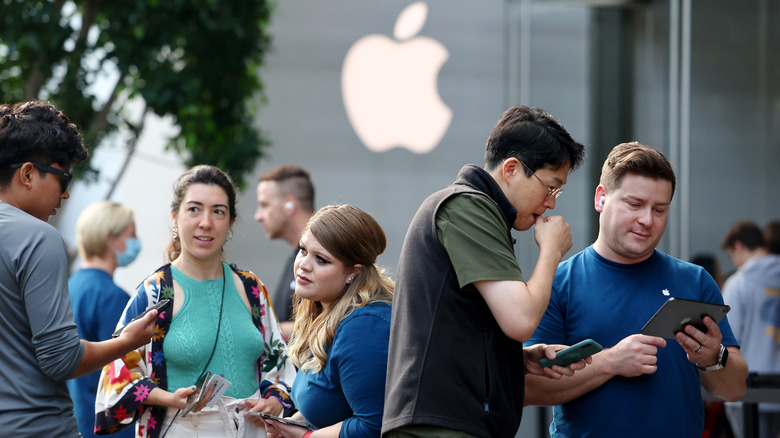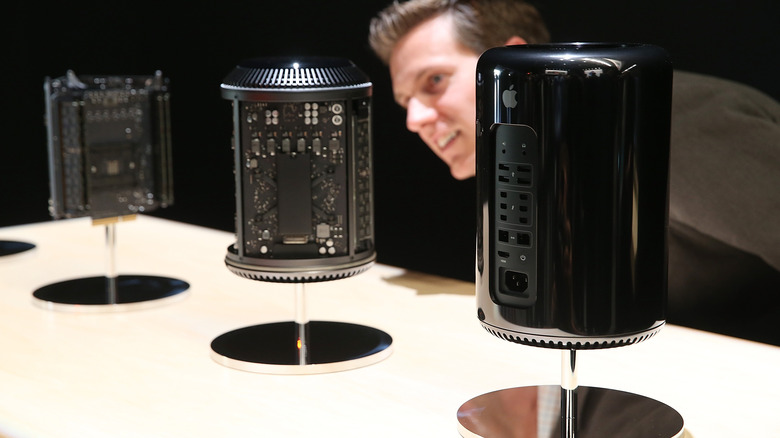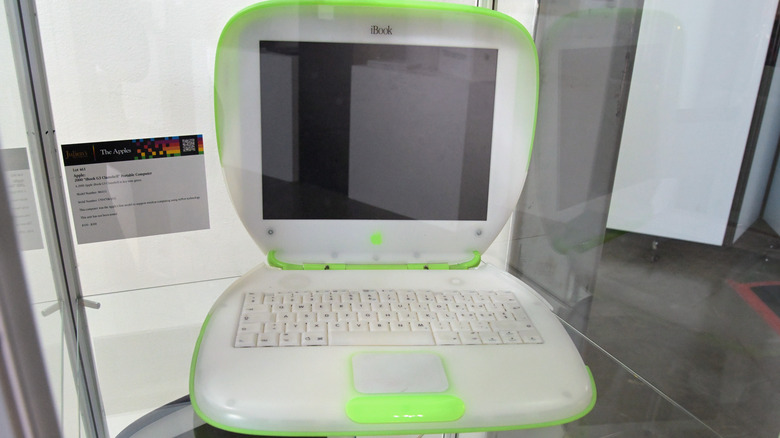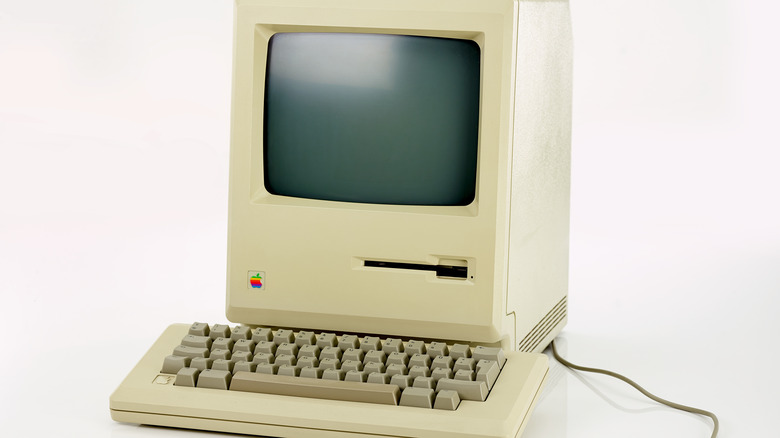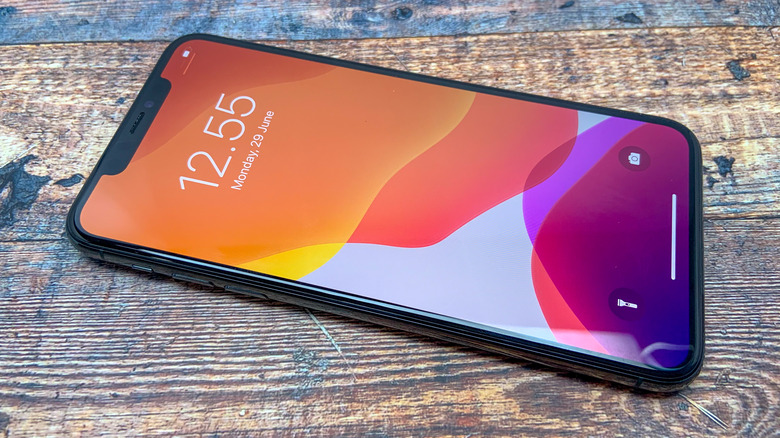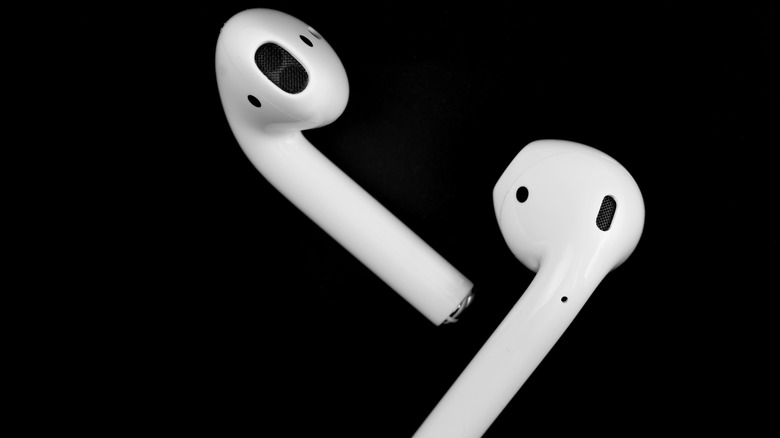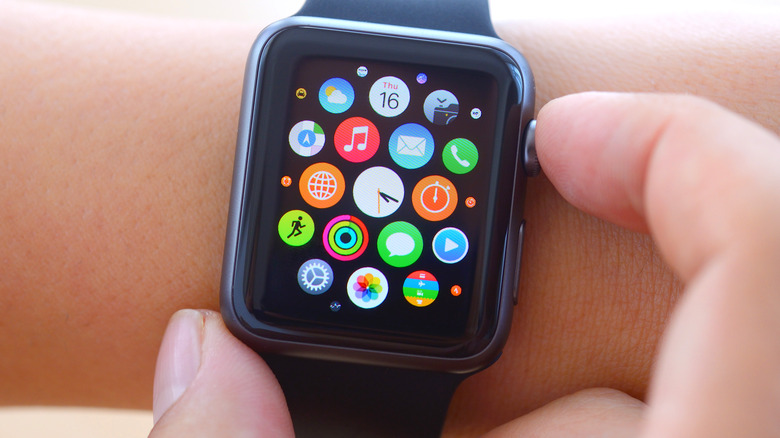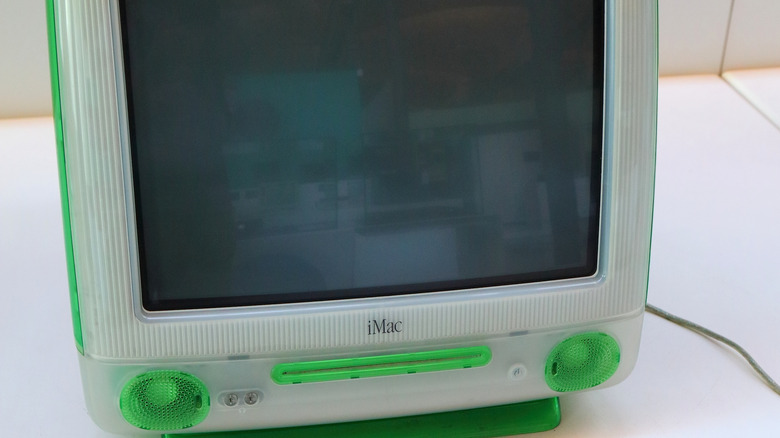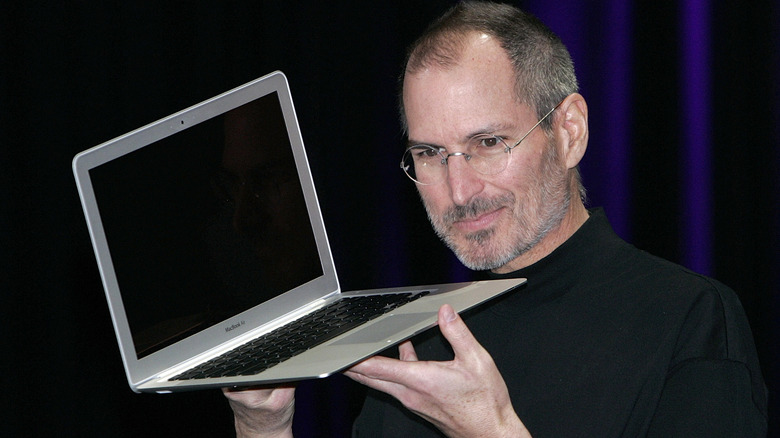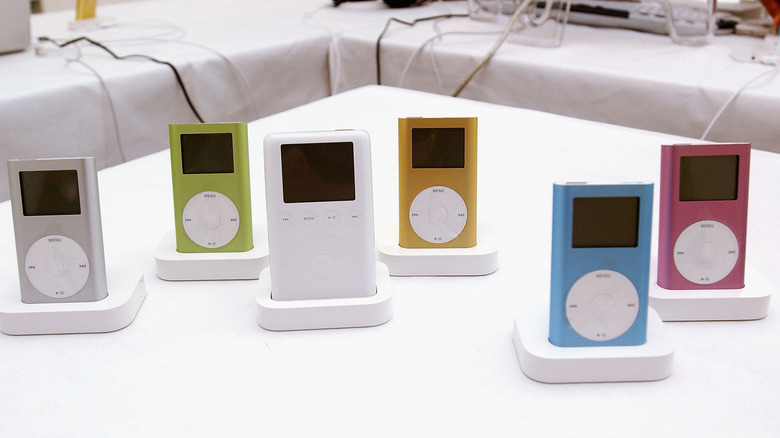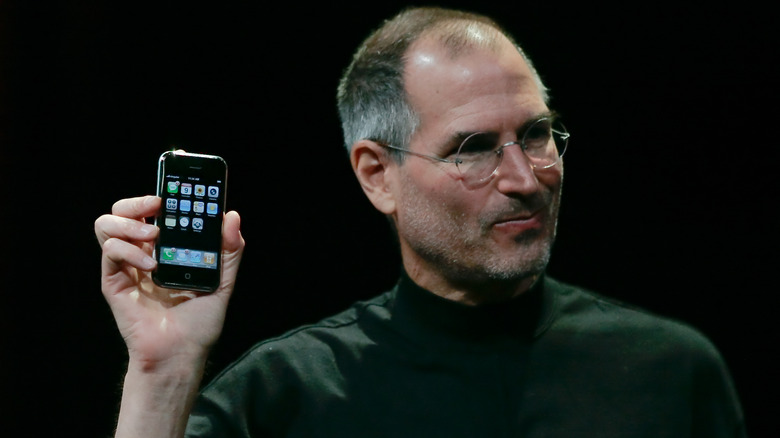The 10 Most Iconic Apple Devices Ever Made (Did Your Favorite Make The List?)
In the nearly 50 years that Apple has existed, the company has made a vast range of products that have changed the face of technology. While there is much to be said for the company's strides in terms of software, a lot of the company's most well-known innovations and changes came on the hardware side of things.
Starting all the way back in 1976 with the original Apple I, the company has had a long road and history towards becoming the most valuable public company in history back in 2012. Throughout that history, there have been some weird and questionable choices, but just so, there has been an equal share of groundbreaking and no-brainer decisions as well. Throughout all of the good, the bad, and the ugly of Apple's product history, there's one word that can underline the hardware they output: iconic.
Over time, there has been no shortage of iconic devices made by Apple that have changed or reinvented the way consumers use and experience technology. Some of those products truly stand out for their iconic form and the broader impact they would have on Apple and consumer technology as a whole. While some may be markedly better than others, there's no doubt that all of these products have left their mark on the technology of today. And undoubtedly, all of these Apple devices are iconic.
Mac Pro (2013)
The Mac Pro has existed since 2006, but perhaps the most audacious iteration of the souped-up Mac was released in 2013. The 2013 model, which has become lovingly known as the "Apple Trashcan," takes on the appearance of — you guessed it — a trash can. Besides the cosmetic shape, a further oddity of the 2013 Mac Pro came in the form of one of the rarest Apple products in existence: the Product Red Apple Trashcan. Apple only made one, and the device was priced at nearly one million dollars.
The cylindrical design of the 2013 Mac Pro came with the mind that it would make for an optimal cooling situation, but the design proved to not be up to the task. The miscalculation in design came as a result of an erroneous bit of future thinking from Apple, which saw the 2013 Mac Pro designed with a twin-GPU set-up in mind. Another issue plaguing the Mac Pro was a lack of modularity. Because of its bizarre form factor, it wasn't exactly an easy or pleasant experience to upgrade the machine.
The compounding of both of the major blunders of the Mac Pro led to a rare instance of Apple admitting defeat in 2017, with a promise that they were "completely rethinking" the Mac Pro. They promised a more modular machine, and the new Mac Pro was unveiled in 2019, this time looking much more like a cheese grater. While the new line of Mac Pros isn't without some issues, such as the wheels for the Mac Pro costing $400, they have remained relatively well-liked, though not as visually striking.
iBook G3
Although the world of mobile computing is dominated by the MacBook today, Apple's previous line of laptops came under the iBook label. Not to be confused with iBooks, the former name for Apple Books, the iBook was the label for one of Apple's lines of laptops up until the initial release of the MacBook in 2006.
Whereas Apple already had the PowerBook line that was geared towards professionals and power users alike, the iBook appealed to more casual users. This thinking wasn't limited to under the hood either, as the original release of the iBook with the G3 model was very colorful. To coincide with the colorful iMac G3, which itself was the consumer version of the Power Macintosh G3, the iBook was primarily made up of translucent casing that varied between colorless, blue, light blue, orange, green, or grey.
The color wasn't the only exotic design choice for the iBook G3, as the shape of it was unique. Rather than the traditional rectangular laptop that the world knows and loves, the iBook G3 was shaped like a clam. Despite what could be perceived as a tacky design, the iBook was a quantifiable success for Apple. Although the shape and colors would get tossed out two years after the introduction of the iBook with 2001's dual-USB model, the original, colorful Clamshell iBook remains the most visually unique laptop Apple has ever released.
Apple Macintosh (1984)
While certainly not the first computer Apple ever released, the original Macintosh from 1984 might just be the most pivotal computer the company has ever put out. There's a good reason, after all, that Apple has referred to it as the "computer that changed everything."
The Macintosh was an absolute game changer for Apple, and its simple design would go on to influence the future of the Mac lineup all the way up to today. The Macintosh was the first all-in-one computer Apple manufactured, and since then, the all-in-one Mac has remained an Apple staple that has progressed throughout the years. Though the original design of the Macintosh is lost when compared to the iMac of today, the all-in-one influence hasn't been shaken.
As iconic as the actual look is of the Macintosh, it is perhaps more well-known for the eyebrow-raising Super Bowl showcase for the device in 1984. Fitting with the year, the ad was themed for George Orwell's "1984." Apple's 1984 Super Bowl commercial turned out to be rather controversial, but perhaps the most outlandish detail of the whole thing is that the commercial was directed by Ridley Scott, the director behind sci-fi marvels such as "Alien."
While the ad took on a life of its own, even later being parodied by Epic Games in the midst of their legal battle with Apple, the Macintosh itself still remains an iconic piece of Apple hardware on its own. Serving as the blueprint for what the Mac would go on to be, there's no doubt that the Macintosh is the icon of Apple's formative days.
iPhone X
In 2017, the iPhone turned 10 years old. In the 10 years the iPhone had existed, much had changed for Apple. Perhaps the most profound change to strike Apple in those ten years was the passing of Founder and CEO Steve Jobs, who had himself introduced the world to the original iPhone in 2007. In their product lineup, Apple trucked on with new devices such as the Apple Watch and the AirPods. However, the iPhone itself hadn't received a game-changing overhaul in several years to that point — at least not until the iPhone X hit store shelves.
The iPhone X was a fresh take on a 10-year-old device, and introduced innovations such as FaceID, which has remained a mainstay of Apple's device security since. The X was also the first iPhone to bid adieu to the home button in favor of the completely swipe-based experience that's still present on the iPhone today. The basic design of the iPhone X has remained the dominant look of the lineup since its introduction, with minor changes sprinkled in. Even the infamous camera notch, which was much maligned at the time, eventually made its way off of the iPhone and all the way to the 2021 MacBook Pro. While the newer iPhones have ditched the notch for the Dynamic Island, the iPhone X's legacy is still visible in the context of Apple's historic lineup.
AirPods
The year was 2016. Apple was poised to make one of its most controversial, yet influential moves within the smartphone world: the iPhone 7 was going to launch without a headphone jack. Although it has since become something of a novelty to have a headphone jack present on your device, at the time, the move was unprecedented and widely panned, seen as a way for Apple to peddle their new wireless earbuds, the AirPods.
Fast forward to today, and the AirPods have remained a mainstay among wireless earbuds. Suffice it to say, the critical reception of the wireless earbuds at the time proved to be something of a misfire. Admittedly, the original AirPods and their younger sibling, the AirPods 2, still look goofy. However, the basic design has remained largely unchanged. Many other true wireless earbuds exist nowadays, but none of them are quite as easily recognizable as the AirPods.
The design changed slightly for the AirPods 3, which brought them to look a little more in between the original AirPods and the AirPods Pros. While it was speculated upon the release of the original AirPods that the future may see design changes such as more color options or removing the stems, that hasn't happened (at least not yet). The original white appearance with the long stems has remained, and become an icon for Apple's wireless earbud brand.
Apple Watch (2015)
Another mainstay of the Apple lineup introduced in the middle of the 2010s is the Apple Watch. Much like the iPhone approaching its ten-year mark, there really haven't been any earth-shattering shakeups to the appearance of the Apple Watch since its introduction in 2015. The basic square design has remained largely in tact, but that's not necessarily a bad thing.
The Apple Watch is iconic among smartwatches, and watches in general, to the point that it's not difficult to spot an Apple Watch in the wild when compared to other watches. That iconic look only varies in exact size, and how much of that square the screen of the watch is able to take up. Over the years, the watch has crept its way to rounding the edges of the watch. The only real, major difference visually comes in the form of the more rugged Apple Watch Ultra, which, with the recent unveiling and release of the Apple Watch Ultra 2, looks to be a yearly iteration of the device.
While it would be nice in the future to see some shake-ups to the Apple Watch, the current look seems to be here to stay for the time being. With the Apple Watch Series 9 having just been released as a largely unchanged iterative update, perhaps next year's 10th generation Apple Watch will finally introduce a refresh to the iconic design, much like the iPhone X did for the iPhone.
iMac G3
In much the same way the previously listed iBook G3 served as the consumer-oriented Macintosh laptop, the iMac G3 was the consumer-oriented Power Macintosh G3. Much like the iBook G3, it came in a variety of colors. What makes the iMac G3 substantially more iconic than its mobile counterpart, however, is the longevity of its iconic status.
The iMac G3 can be seen as the influence for the current line of iMacs that were unveiled last year, which comes in a range of colors much like the iMac G3. However, the standout design of the iMac G3 doesn't end with the colorful, translucent casing. One of the more infamous pieces of design that comes with the iMac G3 is its mouse.
Apple doesn't necessarily have the greatest track record when it comes to a mouse, with the Magic Mouse's infamous charge port placement standing out in particular. What was so out there with the iMac G3's bundled-in mouse was the shape. It was a hockey puck. Mind you, it was a hockey puck that was color-coordinated to the color of the iMac G3, but still a hockey puck. As much of an ergonomic nightmare as it is, the shape of the G3's mouse still holds to the iconic nature of the device as a whole.
The iMac G3's general design wouldn't end up passing on to its successor, but it did end up becoming the baseline behind the eMac. The eMac was the educational offshoot of the G3, and it was initially just for schools. It retained much of the iMac G3's design, just with smoother edges in addition to only being available in white.
MacBook Air (2008)
The MacBook Air is the most iconic computer made by Apple, and perhaps one of the most iconic laptops of all time. Since its introduction in 2008, the MacBook Air has enjoyed its place as one of Apple's premiere mobile computers, alongside the MacBook Pro. Moreover, the basic design of the MacBook Air has stood the test of time.
The sleek silver exterior paired with the black keyboard make the MacBook Air one of the most visually striking laptops all around, and that design has remained the basic template for MacBooks since. What made the MacBook Air particularly stand out at the time of its reveal was Apple's claim that it was the world's thinnest laptop. Although the MacBook Air might not hold the thin crown these days, the newest M2 MacBook Airs pack a ton of punch for a very small package.
The iconic look of the MacBook Air has only recently started to see true deviation in the MacBook lineup, with the addition of more colors and the M2 models in particular having a more flat design and a 15-inch option compared to the traditional 13-inch. When the range of changes in the lineup remains that small, it becomes hard to deny the iconic status of the MacBook Air that gave the lineup its consistent look.
iPod Mini (2004)
Before the advent of the iPhone, the king of Apple's products was, by and far, the iPod. In a time before the smartphone could deliver all of the music listening capability imaginable, the MP3 player was a must-have accessory. In that sphere, no one was doing MP3 players quite like Apple its signature product at the time, the iPod.
The iPod came in a lot of models, including the original iPod, the tiny iPod Nano, the displayless iPod Shuffle, the almost-a-phone iPod Touch, and the iconic iPod Mini. In particular, the 2004 model of the iPod Mini holds up as the most iconic iteration of Apple's MP3 player. The iPod Mini was everything the original was, but it was smaller, sleeker, and more colorful.
What makes the iPod Mini so iconic amongst the already iconic line of MP3 players is that it was the iPod that introduced the signature click wheel to the lineup. Where previous offerings of the iPod up to the Mini's release had the same wheel layout as separate or detached buttons, the Mini introduced the wheel as all one button that clicked on multiple sides. A simple, but intuitive piece of design that stuck to every iPod with a wheel released after the original Mini.
The iPod line was officially discontinued in 2022 with the announcement that the last iPod Touchs sold would be the last iPods sold altogether. However, the iPod Mini's iconic design changes died out in 2007 with the release of the final iteration of the iPod Classic. The click wheel and sleek, colorful look introduced by the iPod Mini went on to influence the remaining years of the lineup's lifespan. Though no iPods remain today, the iPod Mini stands tall as an icon of a bygone age of Apple products.
iPhone (2007)
When it comes down to it, there's simply no other product more synonymous with Apple than the iPhone. Steve Jobs unveiled the iPhone at his 2007 keynote in what is now one of, if not, the most famous tech reveals of all time. The iPhone was slowly built up by Jobs as three separate products before he finally revealed that it was all one device.
As iconic as the keynote unveiling of the original iPhone is, it wouldn't have been able to stand the test of time if the phone couldn't live up to the hype. In every way it needed to, the iPhone revolutionized the phone and tech industry. In a matter of years, the world of communications changed with the boom of smartphones onto the market, and in America, the iPhone was (and still is) the phone at the top of the food chain.
What made the iPhone work so well was its simplicity. Jobs himself explained it best in the keynote — the iPhone was going to use the most intuitive pointing device known to man: your fingers. The basic layout of the phone with the screen, the home button, the volume buttons, and the power button remained unchanged, with only minor tweaks for, ten years. The overall design of the iPhone defined what a smartphone was in general for the public, not just within Apple. That basic layout that the iPhone popularized would remain dominant on the market until Apple themselves popularized its replacement with the iPhone X.
There are plenty of iconic Apple products, but none have had the scale of impact that the original iPhone had. The world of smartphones, as it exists today, exists within the legacy of the original iPhone. It is, almost undoubtedly, the most iconic Apple device ever made.
